Sumashijiru is a fundamental soup dish in Japanese cuisine. Despite its clear appearance, it allows you to fully appreciate the essence of dashi broth.
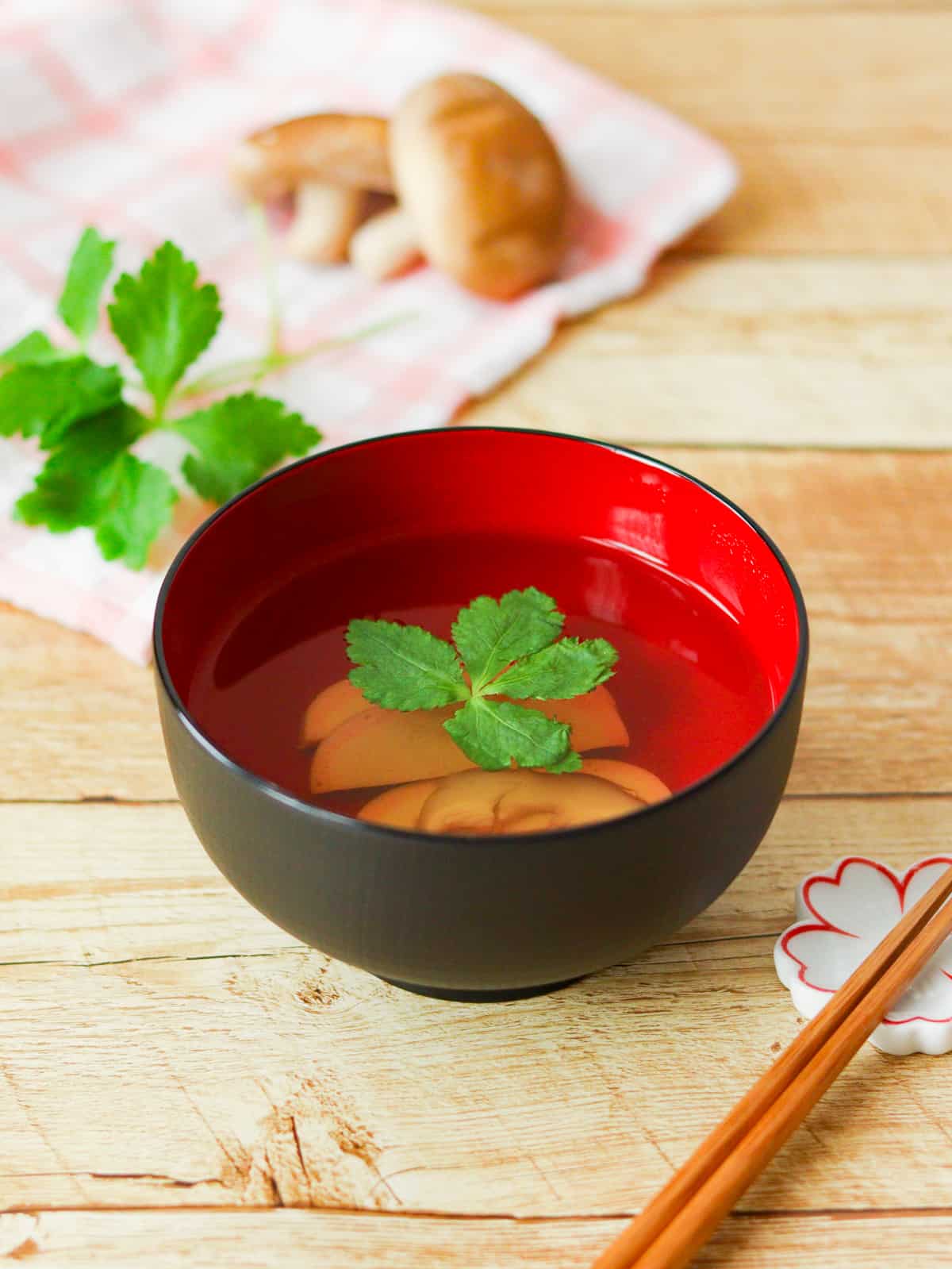
Jump to:
What is Sumashijiru?
Sumashijiru is a traditional Japanese clear soup made with dashi broth, seasoned with salt and soy sauce. "Sumashi" means clear, and "jiru" stands for soup. It is a simple yet delicious dish that allows you to experience the delicate flavor of dashi, enjoyed not only as a regular meal but also at celebrations.
You can use any type of dashi for this dish, but I highly recommend using awase dashi, which combines kombu dashi and bonito dashi. When made with these ingredients, the umami flavor becomes even more pronounced and exquisite.
This recipe includes instructions on how to prepare awase dashi. However, if you would like to learn more about the process of making dashi in detail, please refer to the linked pages titled "Kombu Dashi" and "Bonito Dashi."
For clear appearance
When making this soup, it is recommended to use light soy sauce. Light soy sauce has a lighter color and slightly higher salt concentration compared to regular soy sauce, making it suitable for achieving the clear appearance of the soup.
However, if you don't mind the soup having a slightly darker color, you can also use regular soy sauce. There won't be a significant difference in flavor.
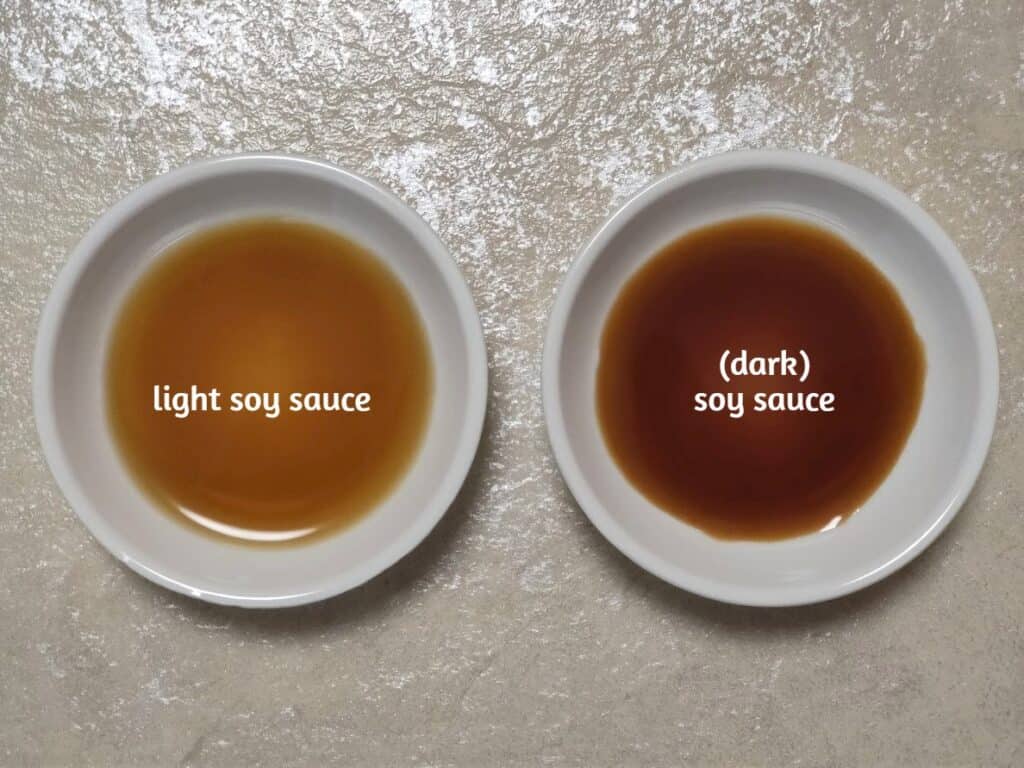
Typical ingredients
The ingredients commonly used in sumashijiru include mitsuba (Japanese parsley), kamaboko (fish cake), shiitake mushrooms, small shrimp, and fu (wheat gluten).
Since this soup dish focuses on enjoying the flavors of the broth itself, it is preferable to use a smaller quantity of ingredients. When the emphasis is on the ingredients, it is called 'suimono,' which is considered a different type of soup in Japan compared to sumashijiru.
Choosing soup bowls
This soup is a dish that stands out for its clear broth. While you can certainly enjoy it in any bowl, I highly recommend using one with a non-dark interior. Opting for a bowl with a light-colored interior will enhance the transparency of the broth and make the dish look more vibrant.
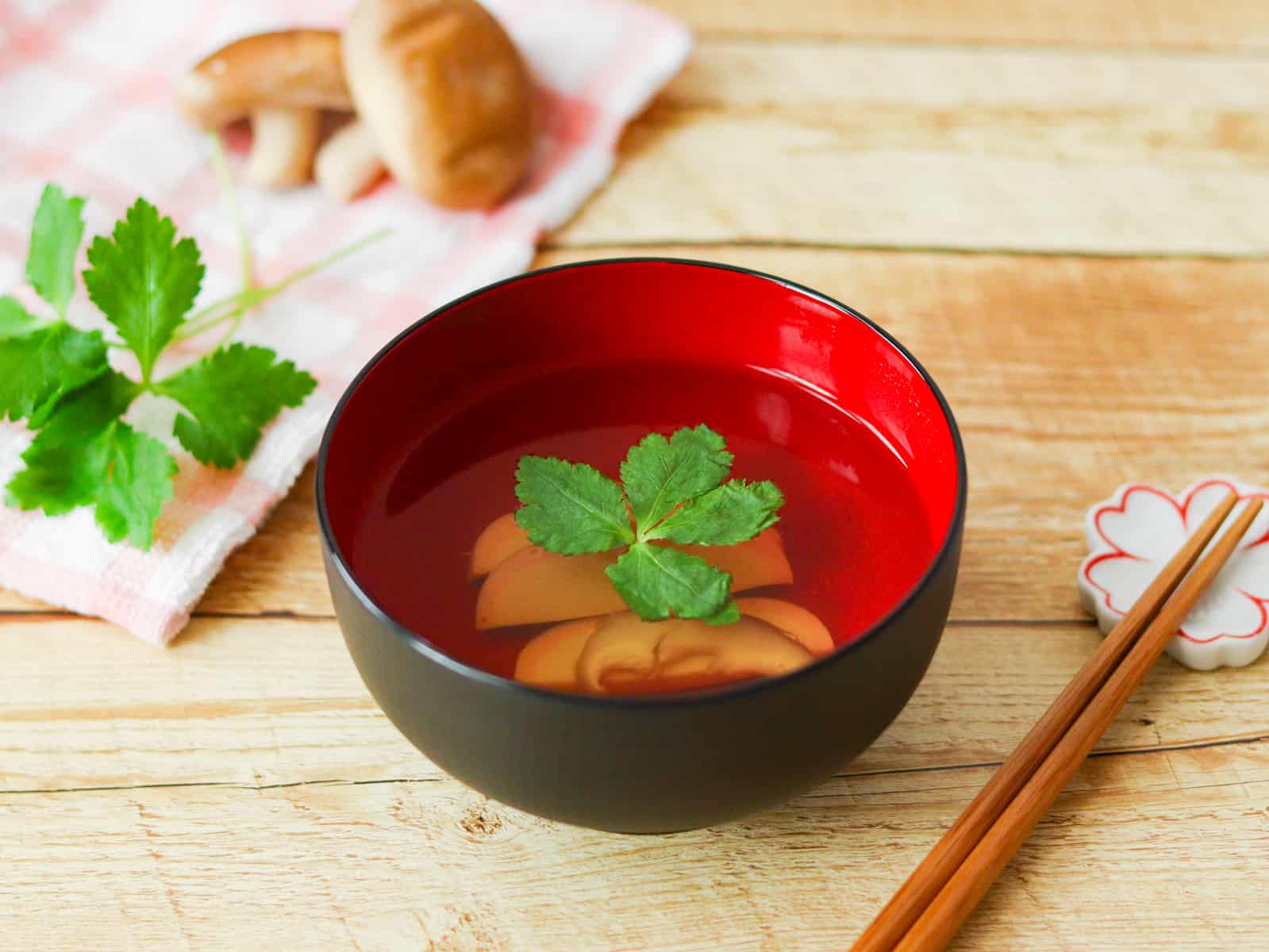
📋Step-by-step recipe
Ingredients
- 6 slices kamaboko (fish cake)
- 1 shiitake mushroom
- 8 mitsuba (Japanese parsley)
Awase dashi:
- 2 cups water
- 0.17 oz kombu (dried kelp)
- ½ cup bonito flakes (katsuobushi)
Seasonings:
- 1 Tbsp sake
- pinch of salt
- 1 tsp light soy sauce (You can substitute it with regular soy sauce; the main difference is the color.)
Instructions
🕒 Total: 50 minsIf you already have awase dashi or another type of dashi, start from step 5. In that case, use 1 ⅔ cups (400 ml) of your dashi for 2 servings.
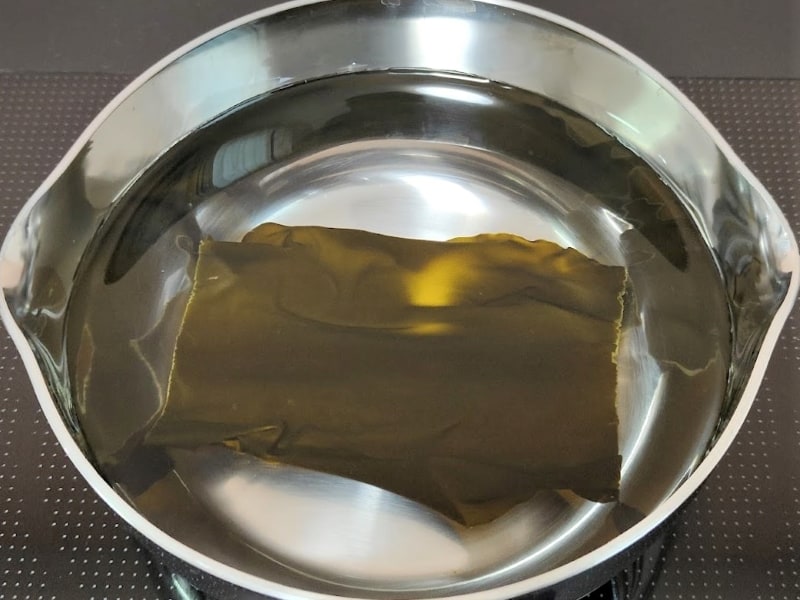
Step 1
Put water and kombu in a pot and let it sit for at least 30 minutes until the kombu softens.
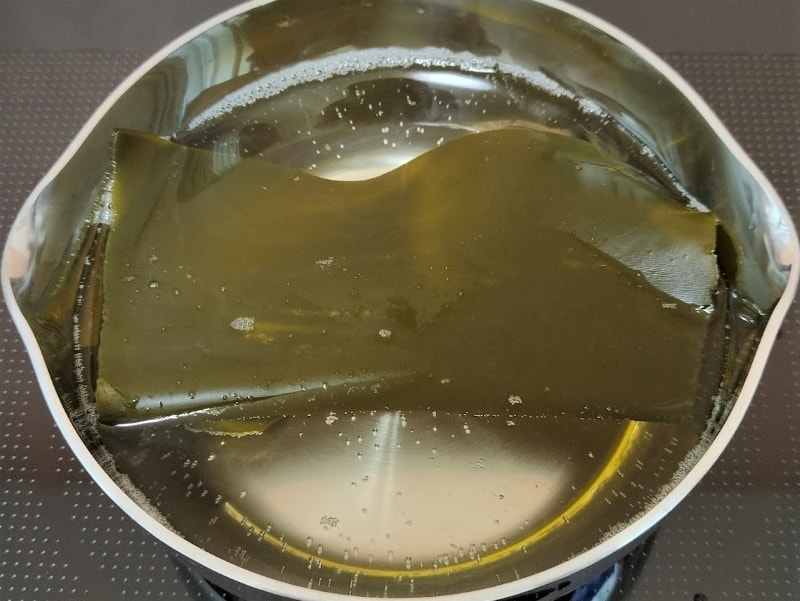
Step 2
Heat the pot over very low heat for about 10 minutes (for 2 servings). When small bubbles appear on the surface of the liquid, remove the kombu.
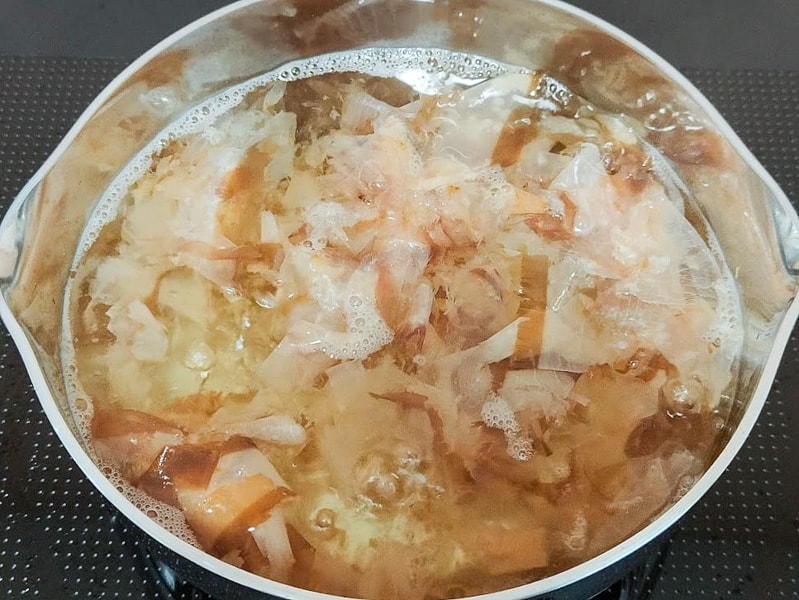
Step 3
Increase the heat and bring the water (kombu dashi) to a boil. Once boiling, reduce the heat to low, add bonito flakes, and let it simmer for 3 minutes.
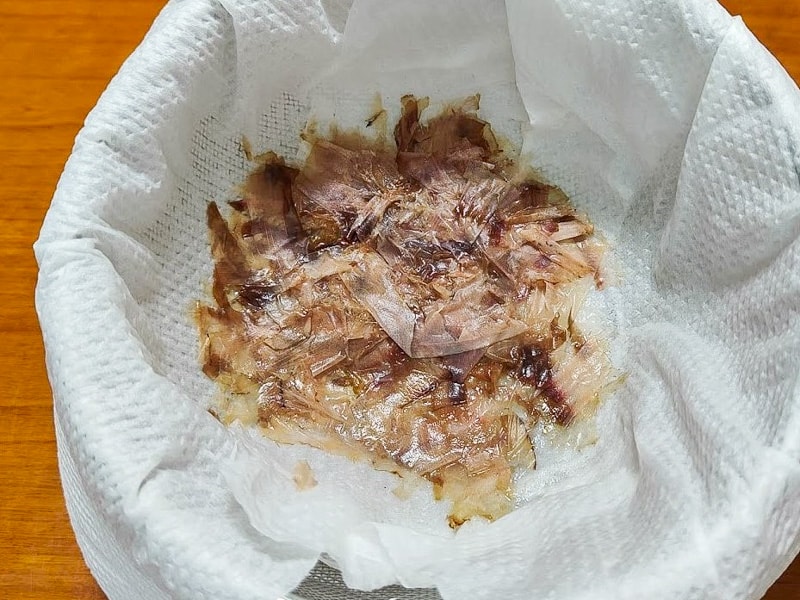
Step 4
Turn off the heat and strain the mixture through a sieve lined with paper towels or a cloth (such as cheesecloth). Alternatively, if you don't mind some fine bonito flakes remaining, you can simply use a fine-mesh strainer. Awase dashi, which combines kombu dashi and bonito dashi, is now ready.
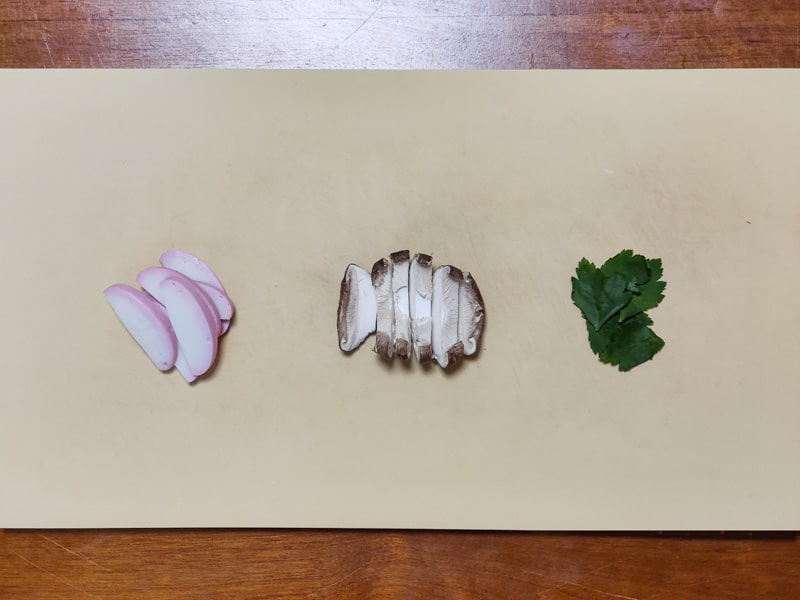
Step 5
Cut kamaboko into ⅕-inch (5 mm) slices. Remove the stem from shiitake mushroom and slice the cap into 6 pieces. For mitsuba, remove the leaves from the stems.
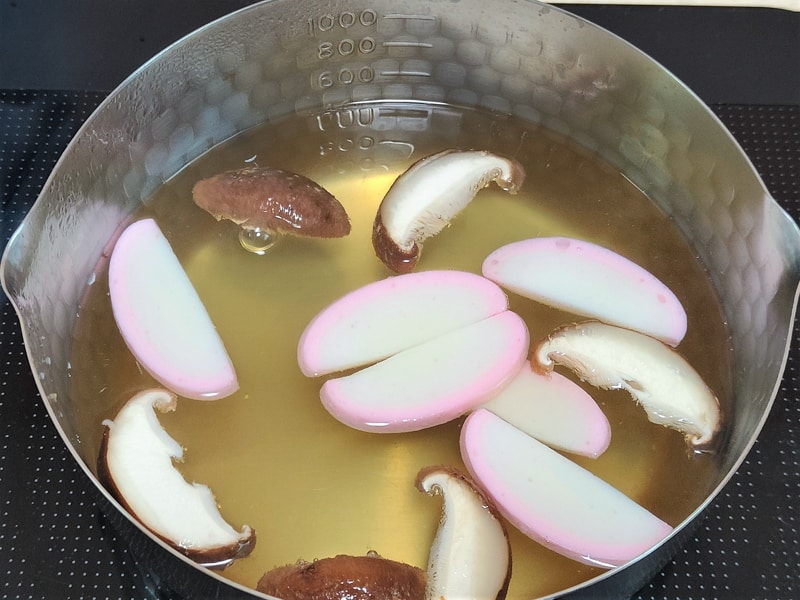
Step 6
Put the dashi, kamaboko, shiitake mushrooms, and seasonings (sake, salt, and light soy sauce) in a pot, and simmer until all the ingredients are cooked.
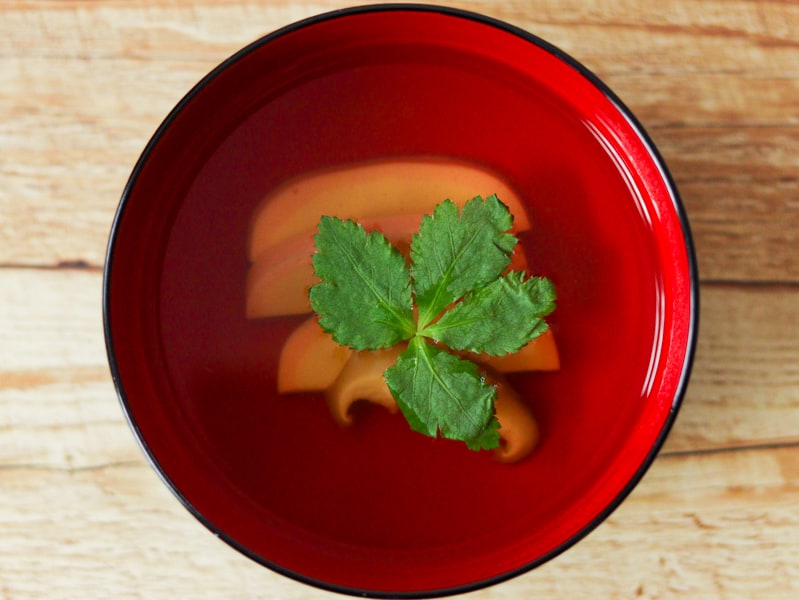
Step 7
Serve in each bowl and top with the mitsuba leaves.
To store
You can store it in the refrigerator for up to 2 days.
If you try this recipe, I’d love to hear what you think. Please consider leaving a review and star rating in the comments below. If you enjoyed it, I’d really appreciate it if you shared it with your friends.
Recipe card
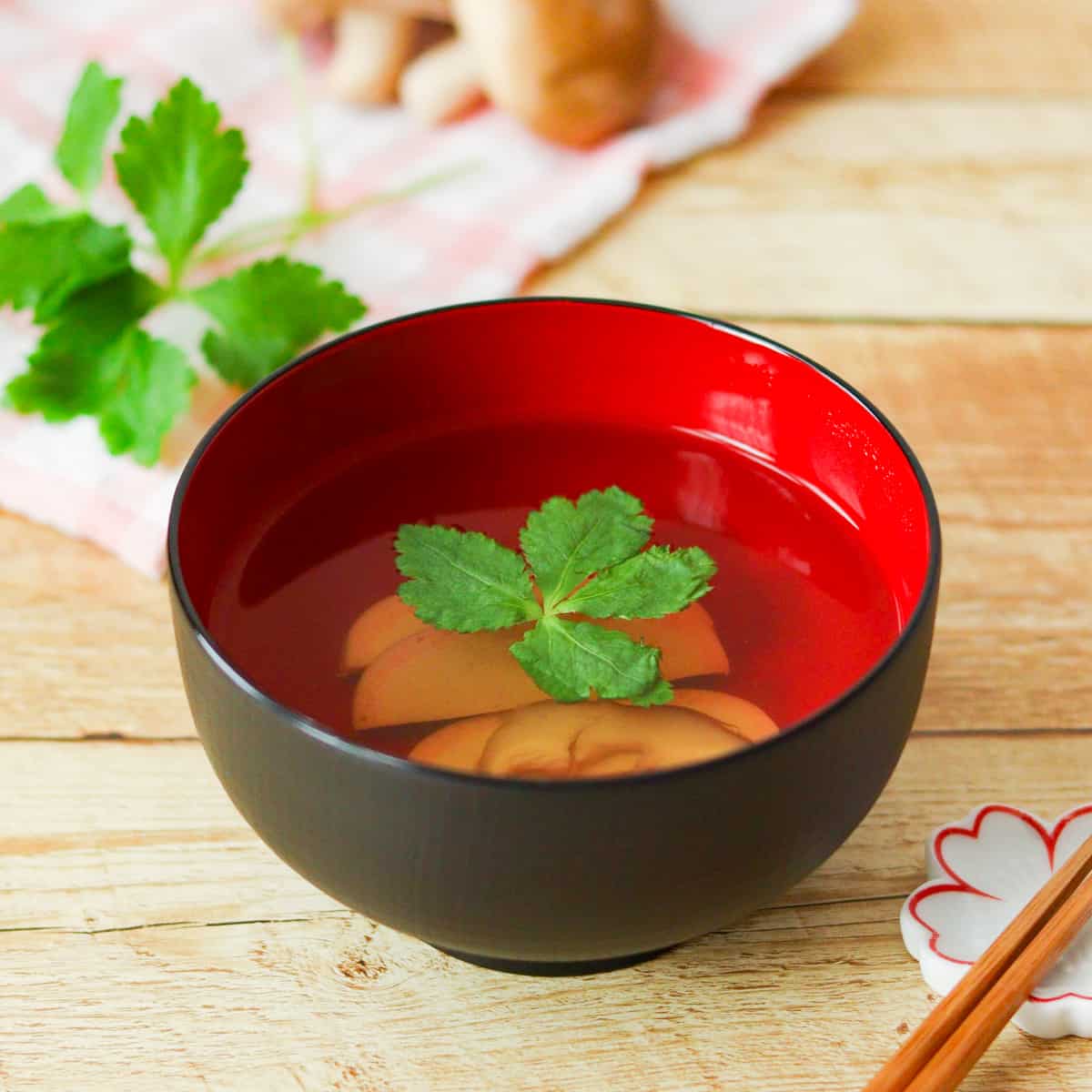
Sumashijiru (Traditional Japanese Clear Soup)
Ingredients
- 6 slices kamaboko (fish cake)
- 1 shiitake mushroom
- 8 mitsuba (Japanese parsley)
Awase dashi:
- 2 cups water
- 0.17 oz kombu (dried kelp)
- ½ cup bonito flakes (katsuobushi)
Seasonings:
- 1 Tbsp sake
- pinch of salt
- 1 tsp light soy sauce (You can substitute it with regular soy sauce; the main difference is the color.)
Instructions
- Put water and kombu in a pot and let it sit for at least 30 minutes until the kombu softens.
- Heat the pot over very low heat for about 10 minutes (for 2 servings). When small bubbles appear on the surface of the liquid, remove the kombu.
- Increase the heat and bring the water (kombu dashi) to a boil. Once boiling, reduce the heat to low, add bonito flakes, and let it simmer for 3 minutes.
- Turn off the heat and strain the mixture through a sieve lined with paper towels or a cloth (such as cheesecloth). Alternatively, if you don't mind some fine bonito flakes remaining, you can simply use a fine-mesh strainer. Awase dashi, which combines kombu dashi and bonito dashi, is now ready.
- Cut kamaboko into ⅕-inch (5 mm) slices. Remove the stem from shiitake mushroom and slice the cap into 6 pieces. For mitsuba, remove the leaves from the stems.
- Put the dashi, kamaboko, shiitake mushrooms, and seasonings (sake, salt, and light soy sauce) in a pot, and simmer until all the ingredients are cooked.
- Serve in each bowl and top with the mitsuba leaves.
Notes
- If you already have awase dashi or another type of dashi, start from step 5. In that case, use 1 ⅔ cups (400 ml) of your dashi for 2 servings.
- You can store it in the refrigerator for up to 2 days.


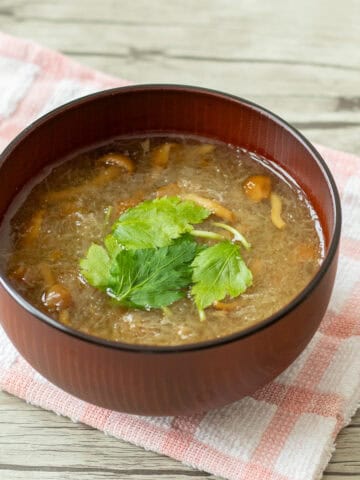
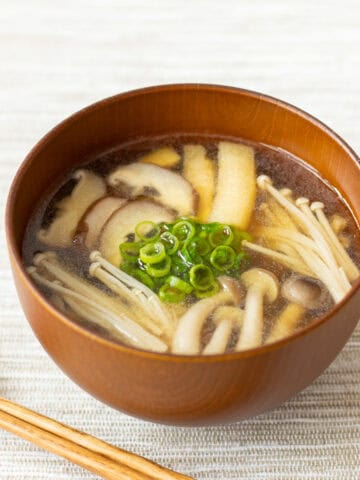

Leave a Rating and a Comment